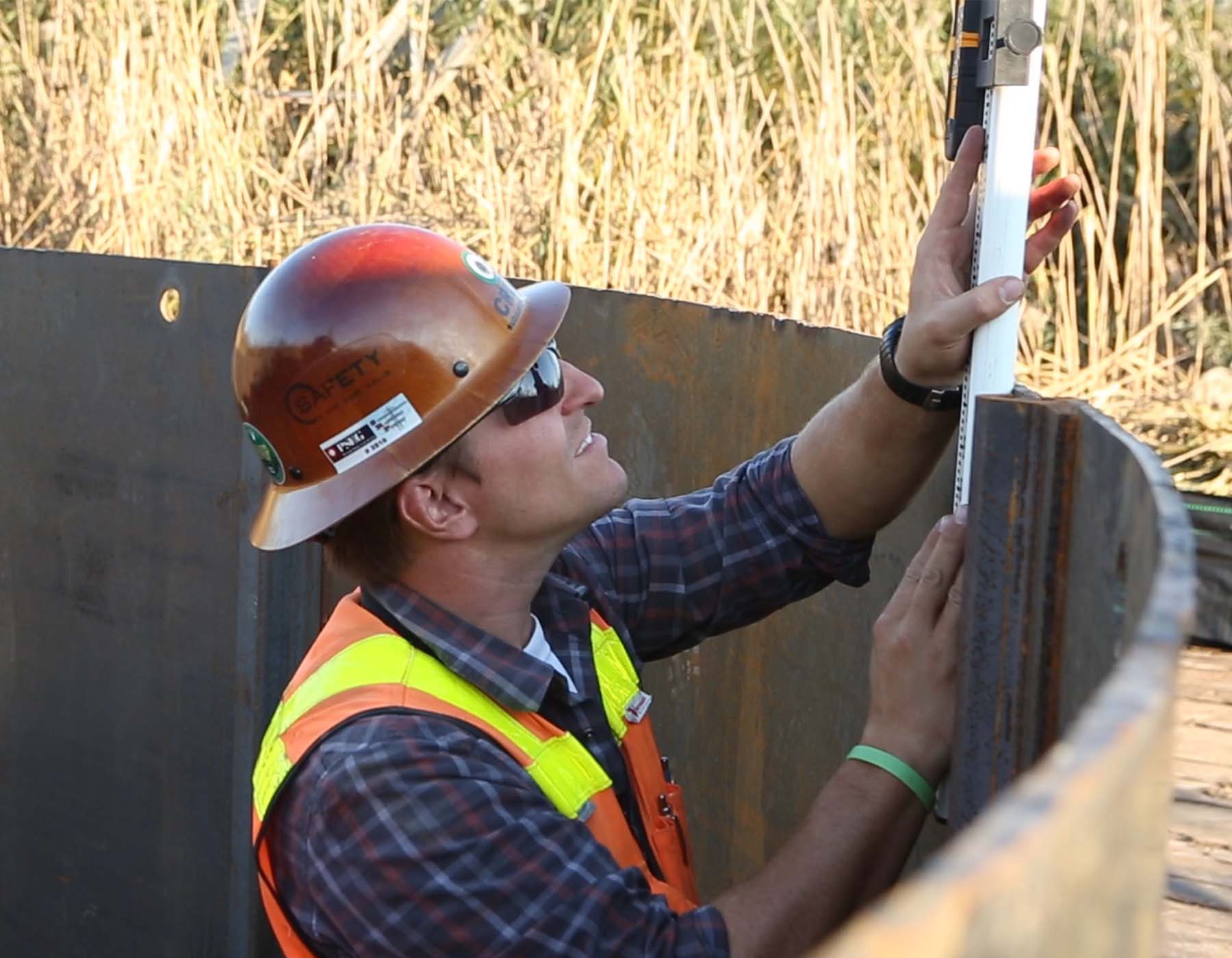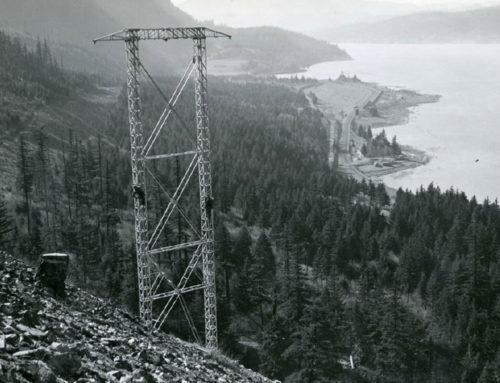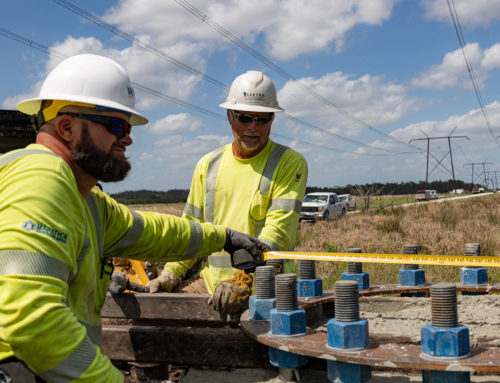Unlike the commercial building and transportation industries, the electric transmission industry does not have a unified code that explicitly covers design and construction of the various foundation types used to support electrical structures; there is no overarching professional group that leads this effort. Guideline documents developed by other industries describe general design methodology for foundation types used in the electric power industry, but practices vary significantly from utility to utility. For this reason, DFI established the Electric Power Systems Foundations Working Group in 2013, and upgraded the working group to technical committee status in 2018 after significant growth in membership and plans for continual activity.

Previous Standardizing Attempts
Nearly 40 years ago, the Electric Power Research Institute (EPRI) embarked on a major research effort to optimize reliability and economics of electric transmission structure foundation design. Strategies focused on improvements in design models, site characterization, exploration strategies, and testing to reduce uncertainty and variance in analysis. Transmission line engineers realized that safety and reliability advancements in design based on probabilistic approaches, with a focus on the unique nature of transmission lines, could better control risk and cost.
Some transmission line professionals took advantage of these advancements, particularly where research led to improved software and models. Yet by 1995, after two decades of extensive research, the industry had made little progress in changing design habits. Most designers were still characterizing sites via deterministic methods, using loads that may or may not relate to a consistent probability of occurrence, and applying a traditional global factor of safety approach (Phoon, et al., 1995). The following two decades have seen even greater developments in software and reliabilitybased analysis methods, but old habits seem to die hard as recent surveys show less than half of design professionals quantitatively assess risk in their design process.
State of the Practice
Recent industry surveys performed by EPRI (DiGioia, 2010) and by DFI (Kandaris and Davidow, 2015) attempt to quantify the state of the practice in terms of design methodology. These surveys examined the current design practices of electric transmission and overhead line design engineers working for U.S. engineering firms and utilities. Among the broader survey results, the EPRI study found that two-thirds of responders were still using traditional deterministic (i.e., safety factor) approaches for design of transmission line foundations, with safety factors ranging upwards of 4.0, depending on the structure type, foundation type and design model. The DFI survey a few years later showed about 50% of electric transmission foundation professionals using traditional methods, and just under 40% using probabilistic design approaches.
Probability-based design methods have enjoyed greater acceptance for deep foundation design in other industries, such as for buildings, bridges, and similar public works where the load and resistance factor design (LRFD) approach is prescribed in federal, state and regional design specifications. Unfortunately, specifications and standards in the electric power industry do not readily address foundation engineering for transmission line structures. Kulhawy and Hirany (2010) note that transmission lines are unique in that they are linearized systems that traverse great distances over potentially highly-variable conditions. This is added to the fact that there is no single controlling authority on loading conditions or design; there exists no universally accepted approach for determining transmission line loading; and there are no overarching methods to evaluate these loads as they are transferred to foundations or foundation service performance requirements (CIGRE, 2002).
Existing Guide Documents
Some professional societies have authored guide documents attempting to present a m o re c o m p re h e n s i v e a p p ro a c h t o transmission line foundation design. The Institute of Electrical and Electronics Engineers (IEEE) and American Society of Civil Engineers (ASCE) produced a Guide for Transmission Structure Foundation Design and Testing in 1985 (reaffirmed in 2007). This general reference identifies s o u rc e s o f d e s i g n l o a d s a n d l o a d combinations from transmission structures typically applied to design foundations. It notes that foundations should be designed to resist maximum designed loads relative to the structure they support. However, the unique nature of both individual and combined steady-state and transient loads could cause foundation performance (deflection, settlement, uplift or rotation) to control foundation design. In addition, typical practice is to envelope worst case foundation loading components – shear, axial and overturning moment – across all loading combinations into a worst-case foundation loading condition. In practice, most utilities deterministically require that loads applied to foundations be greater than the structure to prevent foundation failure prior to structure loss. Currently, there is not a consistent method to ensure uniform load increases for foundations as opposed to structure capacities.
As an example, in evaluating industry inconsistency in design inputs, both surveys queried designers on the use and limits on laterally loaded foundation performance parameters (i.e., deflection and rotation) for reinforced concrete drilled shaft design. Both surveys found that the allowable deflection at the top of shaft as typically being deterministically selected with values ranging from 2 to 6 in (51 to 152 mm), and pier allowable angular rotation ranging from 1.0 to 2.5 degrees. The DFI survey found about half of the respondents evaluated pier deflection and rotation using factored loads, another onequarter evaluated these performance parameters at service loads, and the remainder either did not know the load source or used other load criteria. When asked to describe the process for determining performance parameter limits,answers varied widely, with designers using in-house standards, looking at past performance of foundations, obtaining values from published literature or obtaining recommendations from local geotechnical consultants.
Kalaga and Yenumula (2016) point out the importance of understanding the effects of angular rotation at ground level on transmission line structure performance. Even small angular rotations can induce large displacement at the top of these tall transmission structures, leading to possible reductions in horizontal or vertical conductor clearances, poor aesthetic appearance, and additional stresses on the pole structure. The authors note there are no universal standards for deflection or rotation limits on transmission structure foundations, leaving designers to use their best judgment. Complicating the analysis further for the average practitioner, recent parametric studies on the effect of combined pole-foundation deflection found this type of analysis to be difficult, requiring the use of multiple software models (Bowland et al., 2015).
The U.S. Department of Agriculture’s Rural Development department provides guidance for the design and construction of rural utility services. Their specifications allow designers the option to specify foundation rotation either as a maximum for all load cases or as a certain value for each load case. Alternatively, the engineer can opt to simply specify a fixed base with no allowable movement at any load value. The standard does recognize the need for varying performance parameters, matching types and probability of loads with foundation response, and also requires the designer to include such effects in calculations as the final deflected pole stresses but gives no guidance on how to approach the problem (USDA RDUP, 2016).
With all the confusion, it is not surprising that many utilities and their consultants develop internal design manuals. The DFI survey indicated that nearly 60% do this in response to the lack of uniform guidance or to consolidate learned knowledge. Both the DFI and EPRI survey results showed current design practices vary widely, and that these variations apply to all aspects of design, including subsurface investigations, foundation design process and design of foundations for all types of transmission line structures. In response, EPRI produced a transmission structure foundation design guide in 2012 with suggested standard design processes for monopoles, H-Frame and lattice tower foundations within the framework of a Reliability-Based Design (RBD) format (EPRI, 2012).
Improving Design Methodology
It is clear that there is little consistency in the approach to transmission foundation design among designers, consultants and utilities. Load factors (primarily safety factors) and performance factors used by designers vary greatly. Foundation design methodologies are not consistent. Methods to integrate structure load factors used for foundation design with reinforced concrete code factors differ or are not used at all ( K a n d a r i s a n d D a v i d o w, 2 0 1 5 ) . Foundation design loads are developed by enveloping worst case loading conditions that do not occur simultaneously, and strength and serviceability design checks are not consistently evaluated at separate loading levels. The consensus among transmission line design professionals is that there is a need to develop a guideline design document with recommendations for a uniform analysis and design approach for deep foundations.
Load-Deformation Response
The goal of the engineer is to design a foundation that performs as expected under the anticipated range of applied loads. At a conceptual level, the mechanics of materials dictates a relationship between stress and strain as a function of soil-structure interaction. The nonlinear nature of the load-deformation response for typical transmission line foundation types is well documented from full scale testing, laboratory scale tests, and most foundation design models in both axial and lateral load modes (Davidson, 1982; Kulhawy et al., 1983; DiGioia and Rojas-Gonzalez, 1994). The relationship offers an opportunity to examine various load levels and performance at those levels in terms of settlement, deflection or rotation. Using either Allowable Stress Design (ASD) or RBD approaches, foundation dimensions are typically sized to reach some ultimate limit of applied resistance capacity. This value is well above the factored applied load, accounts for variability in soil properties, and results in large foundation movements as plastic motion has likely been achieved and foundation failure is imminent. Alternately, foundation movement at factored maximum applied loads tends to be in the elastic-plastic transition range, while service (unfactored) applied loads are expected to be within the elastic range of foundation movement, where normal deformation is mostly recoverable.
As previously noted, the industry surveys indicate inconsistency in how transmission line designers select performance parameters or the load level associated with those parameters. These parameters should not be arbitrary but should relate to performance at a specified load or resistance condition. It is easy to understand how improperly applied performance parameters could result in highly-conservative designs if everyday service limits are assigned at maximum factored applied loads, or worse, at ultimate resistance capacity. Most engineers have well-developed concepts of deformation for service and design conditions, as these are in ranges of movement that would be expected. However, when asked to provided performance parameters for models at ultimate capacity, most still respond with limits they would desire at those lower load values. It is not intuitive to define deformations at failure. Studies of laterally loaded, short, rigid drilled pier transmission line foundations tested by EPRI for development of its lateral load model explored theses load-deflection and load-rotation relationships (Davidson, 1982; Kandaris et al., 2012). The earlier study determined that ultimate shaft resistance (capacity) is reasonably defined at the point where a pier rotates to an angle of about 2 degrees. The latter study found that for every 1 degree of pier rotation, the top of the pier laterally deflects from 3.5 to 4% of the pier diameter. In other civil design sectors, service limit states are well defined and the associated working loads are based on e i t h e r c o d e s o r e x p e r i e n c e . Wi t h transmission line foundation design, there is no controlling code to follow. Few design models present service load evaluations. Unfactored transmission line structure service loads are rarely, if ever, calculated by structure designers or vendors.
Compatible Load Factors
Although the utility industry has not directly addressed the issues of using a probabilistic-based method to assess combined structure and environmental loads on foundations, guide documents developed by other agencies and professional organizations can be used to better understand how these can be incorporated with transmission line foundation design. These documents include load factors that vary depending on specified strength, extreme event and service load cases.
• ASCE/SEI Standard 7-10 (ASCE, 2010) – Probabilistic method of assessing variable load factors for combined dead, live, roof, wind and earthquake loads on structures.
• NCHRP 489 (Ghosn et al., 2003) – Probabilistic method of assessing variable load factors for combined dead, traffic, wind, collision and earthquake loads on bridge structures. Probabilistic foundation scour depth factors are also given for various extreme event load cases.
• AASHTO LRFD Highway Bridge Specifications (AASHTO, 2012) – Probabilistic method of assessing variable load factors for combined loads from components/attachments, traffic and other live loads, wind on bridges, water on piers, ice on piers, collisions and earthquakes.
The NCHRP report presents analysis of target reliabilities for pier scour, combined maximum wind and scour, and combined maximum ground motion and scour.
Moving Forward
There is a demonstrated need to provide a unified approach or comprehensive set of state-of-the-practice guidelines that assess risk and account for variability in loads and soil resistances for the design of electric transmission line foundations. The industry lacks consistent standards for design approach (i.e., allowable strength and reliability), compatible load and resistance factors, reliability level, and performance parameters.
D F I ’s E l e c t r i c P o w e r S y s t e m s Foundations Committee intends to lay the groundwork for these future guidelines and is presently preparing a state-of-the-practice white paper that summarizes current industry practices, and evaluates existing foundation types, electric system codes and civil engineering standards. Future foundation design guidelines resulting from this effort will be prepared by this group to:
• Establish a consistent approach to ASD and RBD methods for all transmission line foundation types.
• Determine consistent reliability levels for load and resistance probability distributions.
• Incorporate resistance factors consistent with RBD methods using a target reliability index consistent with the risk associated with this type of facility.
• Emphasize the importance of following a consistent design process, as detailed in IEEE-691, using probabilistic methods to better select geotechnical investigation sites and determine geotechnical design parameters.
• Address uniform ultimate and service limit states that are consistent with nonlinear load-deformation responses observed with transmission line structure foundations.
• Provide recommendations for compatible probabilistic load factors and load cases for evaluation of transmission foundations subject to nonstructural environmental events, such as flowing water and ground motion. More research is needed to assess the probability of simultaneous occurrence of multiple extreme load events. Approaches used by the highway transportation industry provide a useful framework for establishing compatible load factors.
• Develop standards for foundation QA/QC programs consistent with various foundation construction techniques and field testing programs. Dictating a single set of guidelines or methodologies is challenging due to the diversity in design approaches, load cases, environmental conditions and design philosophies utilized by various utilities. Thus, recommendations of future guidelines must present best practices and sound reasoning that can be adapted to the variable nature of the electric power industry.




